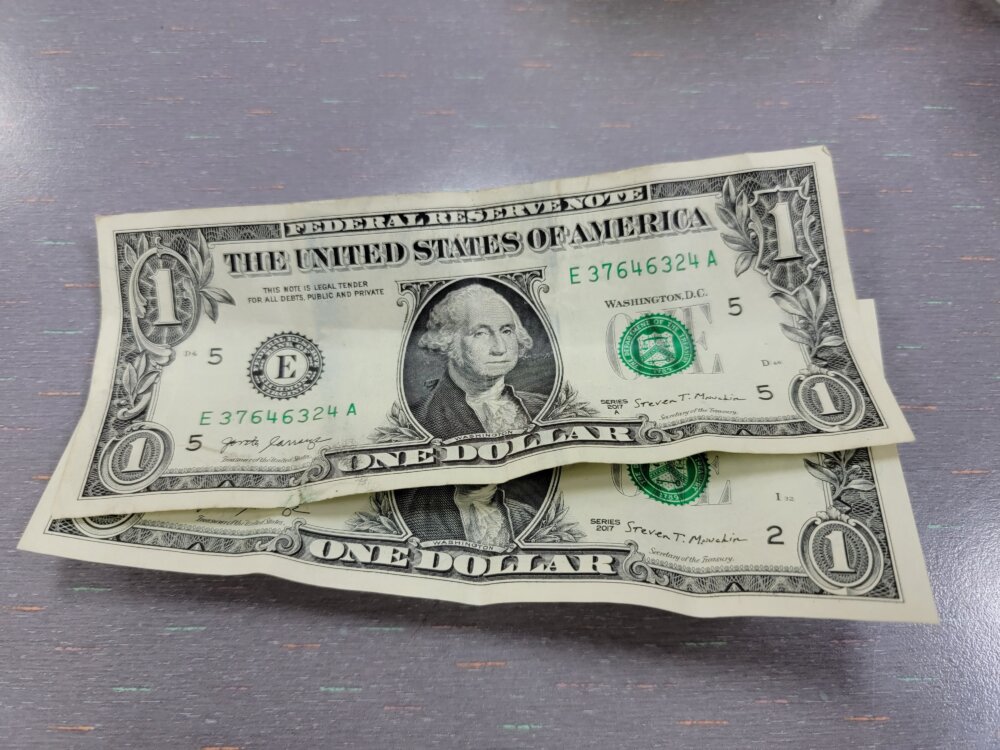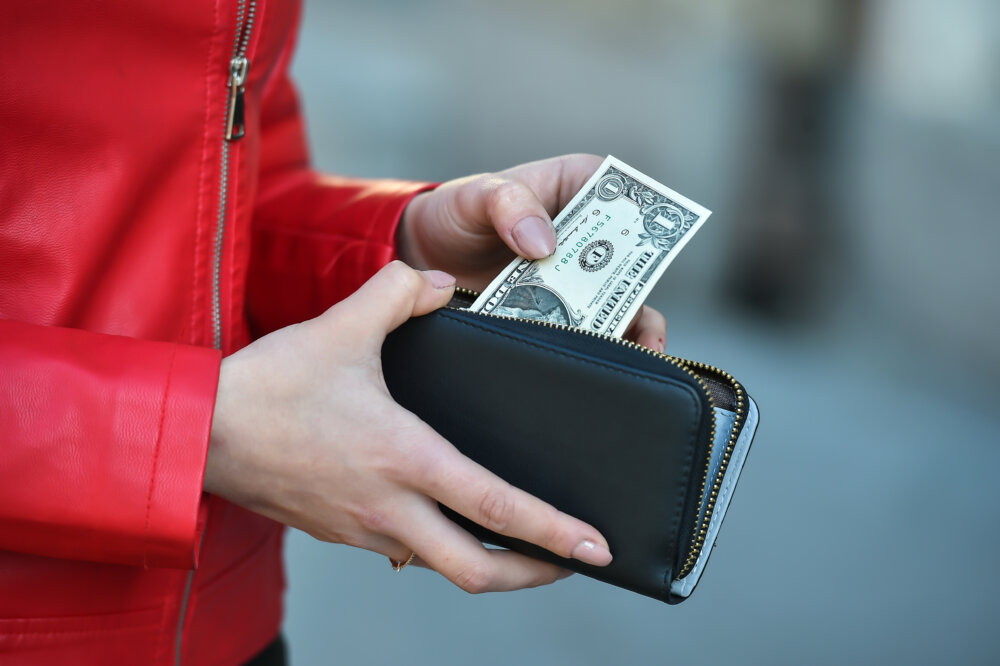As prices rise and shrinkflation affects our daily lives, many of us are trying to find the best ways to make our dollars stretch as much as possible.
But you might want to take a closer look at the bills in your wallet, because they could be worth more than you think.
There are $1 bills currently in circulation that may be worth hundreds, potentially even thousands of dollars, and it all comes down to the serial number printed on the bill. You could have one already in your possession.
Many people are familiar with antique coins being worth more than their face value. The same goes for $1 bills with specific serial numbers.
History of the $1 Bill
The very first $1 Federal Reserve notes, according to The Bureau of Engraving and Printing, came out in 1963 and had a design featuring George Washington on the front and the Great Seal on the back. They looked much the same back then as they do now. And in part because this bill is not very frequently counterfeited, you won’t necessarily see it redesigned anytime soon.
For the most part, most modern $1 notes are worth about face value. Bills made before this time may be worth more, though, because of their age and the fact that they are so different in appearance. However, this isn’t always the case. Some bills, such as ones issued by states during the Civil War era, are relatively worthless — at least, as money. They may have some value as historical artifacts, though.

However, some dollar bills are worth more, and that’s generally because of their uniqueness — and the same goes for some $5, $10 and $20 bills, too. And with many of these green notes, the uniqueness comes from serial numbers.
How to Read a Dollar Bill
On $1 bills and $2 bills, you’ll find the series year in the bottom right (on higher denominations the year may be part of the serial number).
Current bank notes have a letter that is associated with the 12 locations of the U.S. Federal Reserve, plus a letter associated with the series year in which it was made. Serial numbers themselves are printed twice on the front of a bill and have eight digits. It’s the serial number you want to look at.
How valuable a number will be to a collector has to do with interesting or unusual combinations, but these can be both objective and personal. For example, one collector might like a serial number that has the same number as their child’s birthdate, or that of a famous celebrity. Others may prefer high or low numbers, or serial numbers that can be read the same upside down (like 00690000).
Basically, you want to watch for unique patterns. There are a few specific sequences that collectors seem to desire the most, though.
Which Bills Should You Be Looking For?
The website CoolSerialNumbers.com has created a list of the most sought-after $1 bills, but it also covers other denominations as well. Here are a few things the site is looking for:
Seven Repeating Numbers in a Row
If you see something like 17777777, or 65555555, then you may have something of value.
Seven Numbers of the Same Kind (in No Particular Order)
Numbers like 33363333 (see the seven 3’s there?) are considered special!
Numbers that Repeat
We all love order, right? So repeating numbers like 898989898 (or other variations of repeating values) stand out to collectors for sure.

Radar Numbers
What is a “radar” number? It’s the numerical version of a palindrome, which is a word that reads the same forwards and backwards — such as the word “radar,” for example.
The number 02233220 is a radar number because no matter which way you read it, it’s the same.
‘Super’ Radar Numbers
A super radar number is a radar number with all the same interior six digits. Confused? Numbers like 10000001 and 011111110 are examples of radar numbers and sought-after serial numbers of bills.
Ladder Numbers
Think of ladder numbers like a sequential pattern. Every number is either one lower or one higher than the previous digit. So, something like 12345678 or 987654321 would be examples of ladder numbers.
MORE:This Chart Shows 31 Fascinating Facts About The History Of The U.S. Dollar

Double Quad Numbers
Double quad numbers are four repeating numbers followed by another set of four repeating numbers. For example, 44440000 or 11110000.
Trailing Aeroes
Any serial number that ends in a double zero is known as a trailing zero, such as 44444400.
Use These Tools to Get Started
There are some serial number requests that get pretty specific, too. If you have some $1 bills or other bills with interesting serial numbers, you can get them appraised at Cool Serial Numbers for $2.
The site also lists examples what current bills with unusual serial numbers are worth right now. Right now, there’s a $5 bill from 1928 priced at $5,000.
If you do want to sell your bills, you can find sellers on specialty sites like Cool Serial Numbers or broader retail marketplaces, like eBay.
If you’re unclear whether or not you have a serial number that’s worth some money, there are tools that can help. For example, My Currency Collection’s Fancy Serial Number Checker lets you input a serial number and gives you a “Coolness Index” rating. That doesn’t mean the bill will get you big cash from collectors, but it’s still fun.
You’ll also want to check out other denominations, like the $100 bill, to see if you have other valuable paper money. So go ahead and start checking your wallet and pockets — and good luck!
This story originally appeared on Don't Waste Your Money.


